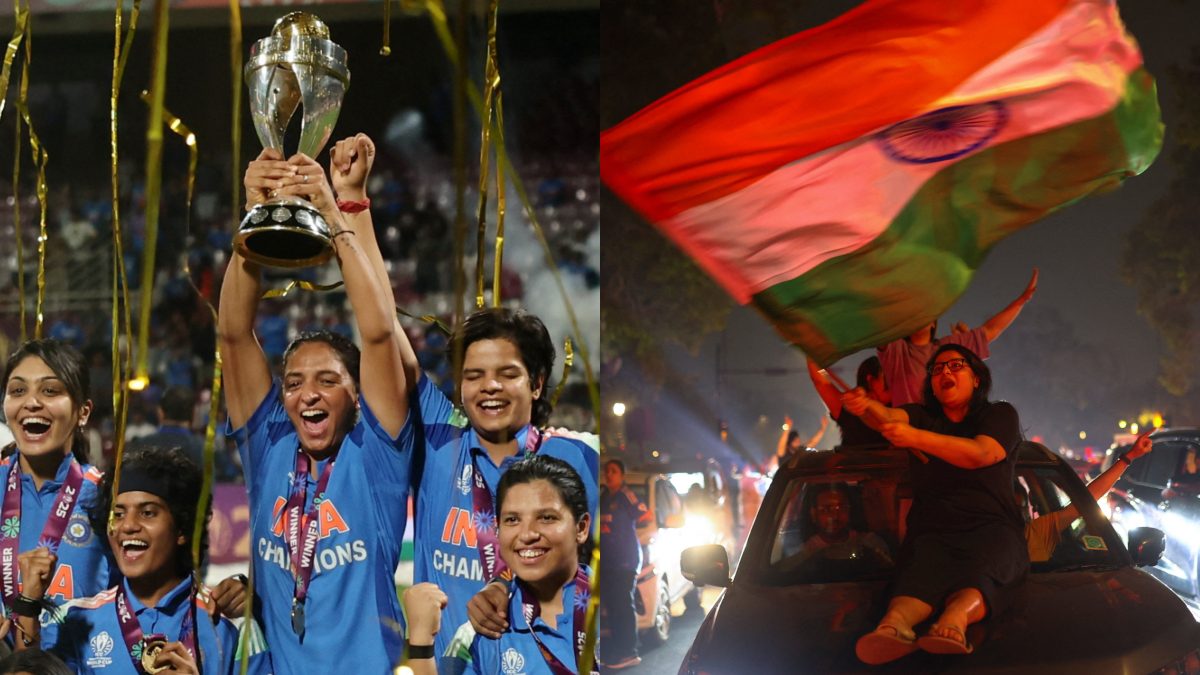November 3 has marked turning points across the globe.
On this day in 1948, Jawaharlal Nehru — India’s first prime minister — delivered his debut speech at the United Nations, outlining the country’s moral and non-aligned vision for a newly decolonised world.
Decades later, in 2014, New York’s One World Trade Center opened, symbolising resilience and renewal after 9/11.
Earlier, in 1903, Panama declared independence from Colombia, reshaping trade and geopolitics with the Panama Canal.
And in 1992, Carol Moseley Braun broke historic barriers by becoming the first African American woman elected to the United States Senate.
We take a brief look at all these events as part of Firstpost’s ongoing History Today series.
Jawaharlal Nehru addresses the United Nations
When India’s first Prime Minister, Jawaharlal Nehru, walked into the United Nations General Assembly hall on November 3, 1948, he represented a nation barely a year old yet already charting a distinctive path in world affairs.
His debut speech to the UN, delivered against the backdrop of the early Cold War and the partition’s aftermath, became a landmark articulation of India’s foreign policy vision — one that placed peace, sovereignty, and moral leadership above bloc politics and military might.
At the time, the newly independent India was emerging from centuries of colonial subjugation and a traumatic partition that had displaced millions.
Globally, the world was dividing rapidly between two ideological poles: the capitalist West led by the United States and the communist East led by the Soviet Union.
Nehru’s challenge was to position India as a principled actor that refused to be drawn into either camp, advocating instead for dialogue, decolonisation, and disarmament.
Nehru began his address by acknowledging the UN’s role as humanity’s “conscience,” a forum that could prevent the recurrence of global conflict.
But he also reminded the assembly that peace was not just the absence of war — it was built on justice, equality, and respect for self-determination.
India, he argued, stood for these principles not as rhetoric but as the lived experience of a nation that had thrown off colonial chains without resorting to violence.
“We do not align ourselves with any group of nations,” he declared, signalling the foundation of what would later become the Non-Aligned Movement (NAM).
One of the central issues on Nehru’s agenda was the question of Palestine, then under intense international scrutiny as the British Mandate collapsed and the Israeli-Arab conflict erupted.
Nehru’s position balanced sympathy for the Jewish people after the Holocaust with support for the Arab nations’ right to sovereignty.
He stated that peace could not be built on displacement or domination — a moral stance that set India apart from most Western powers at the time.
Nehru also used the platform to speak against racism and apartheid, particularly in South Africa, where India had been one of the first countries to bring the issue before the United Nations in 1946.
His words were not merely diplomatic gestures but part of a sustained Indian campaign to isolate the apartheid regime. He warned that systems denying equality based on race or colour would eventually lead to international instability and moral decay.
The speech carried added weight because of the Kashmir dispute, which had already been brought before the UN by India earlier that year.
Nehru’s appeal for peace and restraint was consistent with his broader philosophy of resolving conflicts through dialogue rather than force.
Yet, his idealism was tempered by realism — he recognised that peace required courage, and sometimes firmness, in defending sovereignty.
Nehru’s address reflected India’s early role as a bridge between the developed and developing worlds. It was the first major statement of India’s global identity — independent, non-aligned, and deeply committed to principles of coexistence.
The tone of moral seriousness and universalism would come to define India’s diplomatic personality for decades. His belief that “freedom is indivisible” resonated deeply with nations still under colonial rule and inspired emerging leaders across Asia and Africa.
In subsequent years, the themes introduced in Nehru’s 1948 speech shaped key moments of world diplomacy — from India’s role in the 1955 Bandung Conference to its leadership in the Non-Aligned Movement.
Nehru’s call for global cooperation rather than confrontation also foreshadowed India’s position during the Korean War, the Suez Crisis, and nuclear disarmament debates.
While critics sometimes labelled his moralism as naïve, his vision proved prescient: the world’s security, he believed, depended on dialogue among equals, not dominance by the few.
For India, Nehru’s speech was also a statement of confidence — that a newly freed nation could speak not from the margins, but as a conscience of the world.
It demonstrated that postcolonial states could lead conversations on ethics, peace, and justice, challenging the monopoly of older powers.
One World Trade Center opens
On the same date, New York City witnessed the official opening of One World Trade Center. Rising 1,776 feet into the Manhattan skyline, the tower became the tallest building in the Western Hemisphere and a physical manifestation of endurance following the September 11, 2001 attacks.
The new complex stood on the original site of the Twin Towers, housing the 9/11 Memorial Museum and embodying a promise that destruction would not define New York’s future.
Designed by architect David Childs, the building incorporated cutting-edge safety systems and green technologies, while its height — 1,776 feet — symbolically referenced the year of American independence.
The opening of One World Trade Center also reshaped Lower Manhattan’s economic geography.
Once a symbol of loss, the district became a hub of commerce, tourism, and civic pride, demonstrating how architecture can act as both remembrance and renewal.
Panama declares independence
Another historic event on November 3 occurred over a century earlier, when Panama declared independence from Colombia in 1903.
The move, supported discreetly by the United States, paved the way for the construction of the Panama Canal, a vital maritime route linking the Atlantic and Pacific Oceans.
Panama’s break from Colombia was driven by economic and strategic interests. The Colombian Senate had rejected a treaty granting the US rights to build the canal, prompting American officials to back Panamanian separatists.
Within days, a new Republic of Panama was declared, and US warships prevented Colombian forces from intervening.
The Hay-Bunau-Varilla Treaty soon followed, granting the US control over the Canal Zone in perpetuity. Though it achieved global connectivity, the treaty sparked resentment in Latin America, where many saw it as an act of American imperialism.
For Panama, independence came at a price — sovereignty compromised by dependence on US protection and economic influence until the Canal’s eventual transfer back to Panama in 1999.
Carol Moseley Braun becomes first African American woman elected to the US Senate
In 1992, another historic first took place. Carol Moseley Braun, a Democrat from Illinois, became the first African American woman elected to the US Senate, shattering multiple barriers in one election.
Her victory during what was dubbed “The Year of the Woman” marked a turning point in American politics.
Moseley Braun’s campaign combined civil rights advocacy with calls for gender equality, healthcare reform, and education.
Her triumph came amid growing public outrage over the Senate’s handling of Anita Hill’s testimony in 1991, galvanising female voters across the nation.
Her six-year term, though not without controversy, represented a symbolic and substantive shift — a signal that the American political establishment could no longer remain homogeneous.
Her election also inspired a new generation of women of colour to enter politics.
With inputs from agencies


)

)
)
)
)
)
)
)
)



